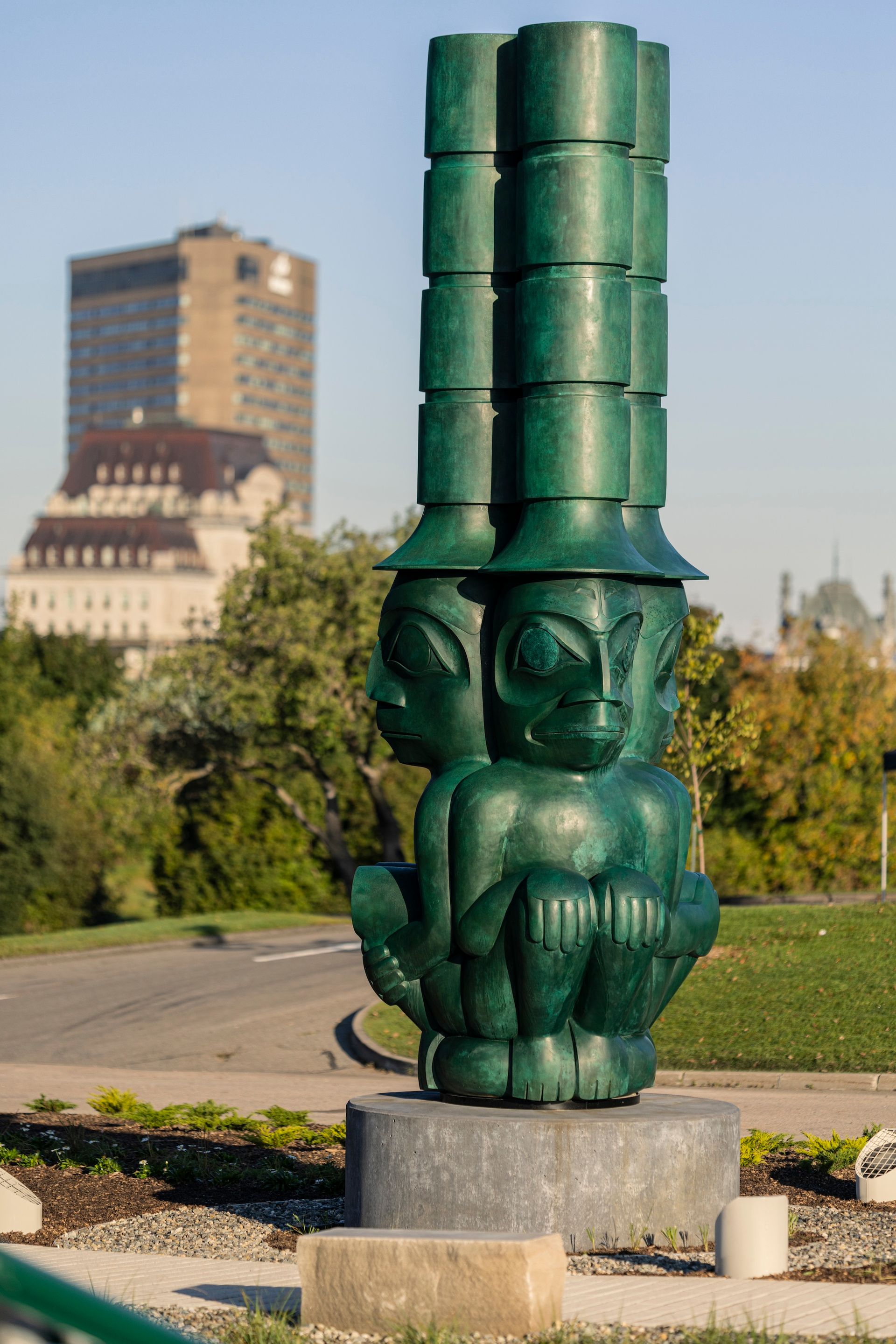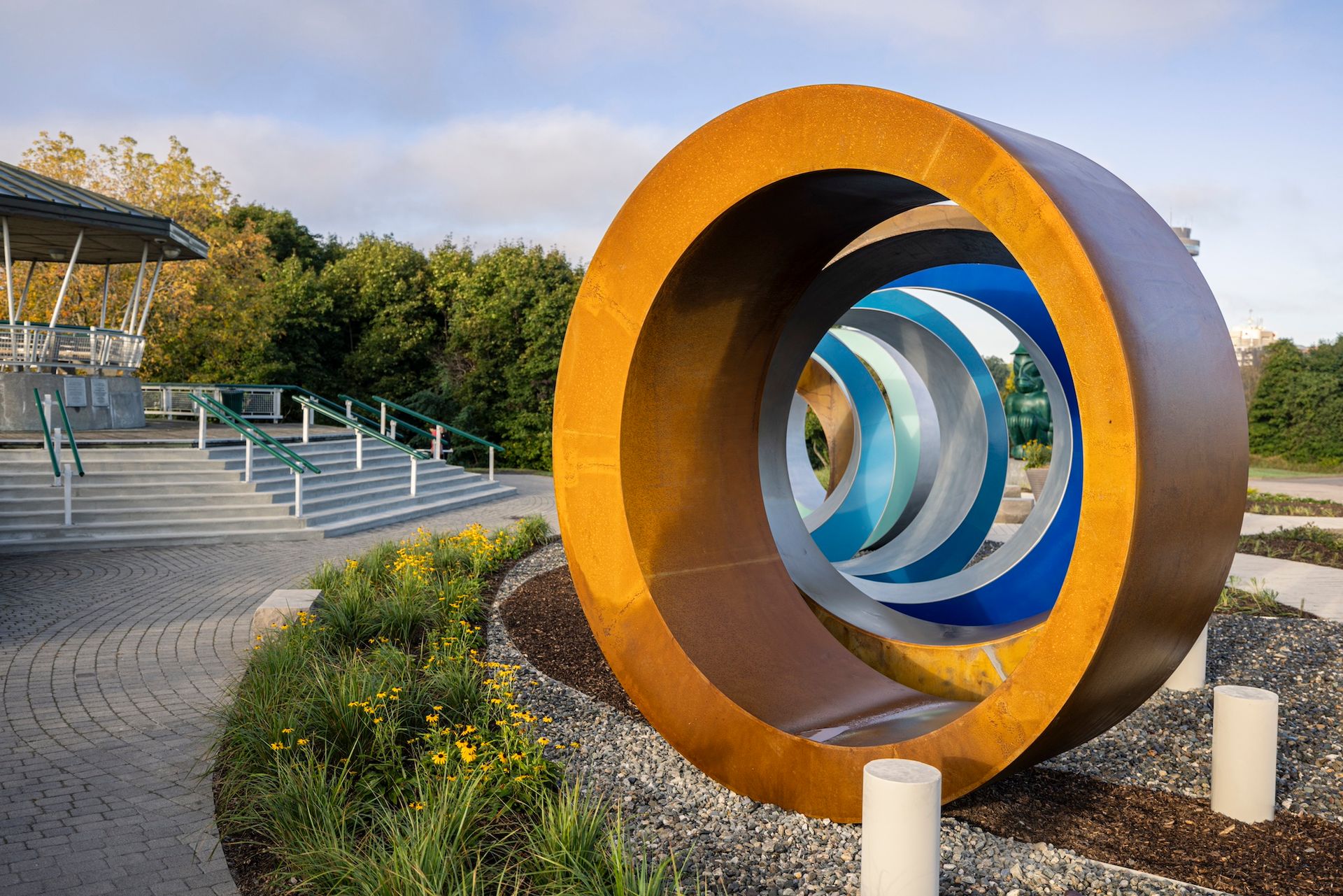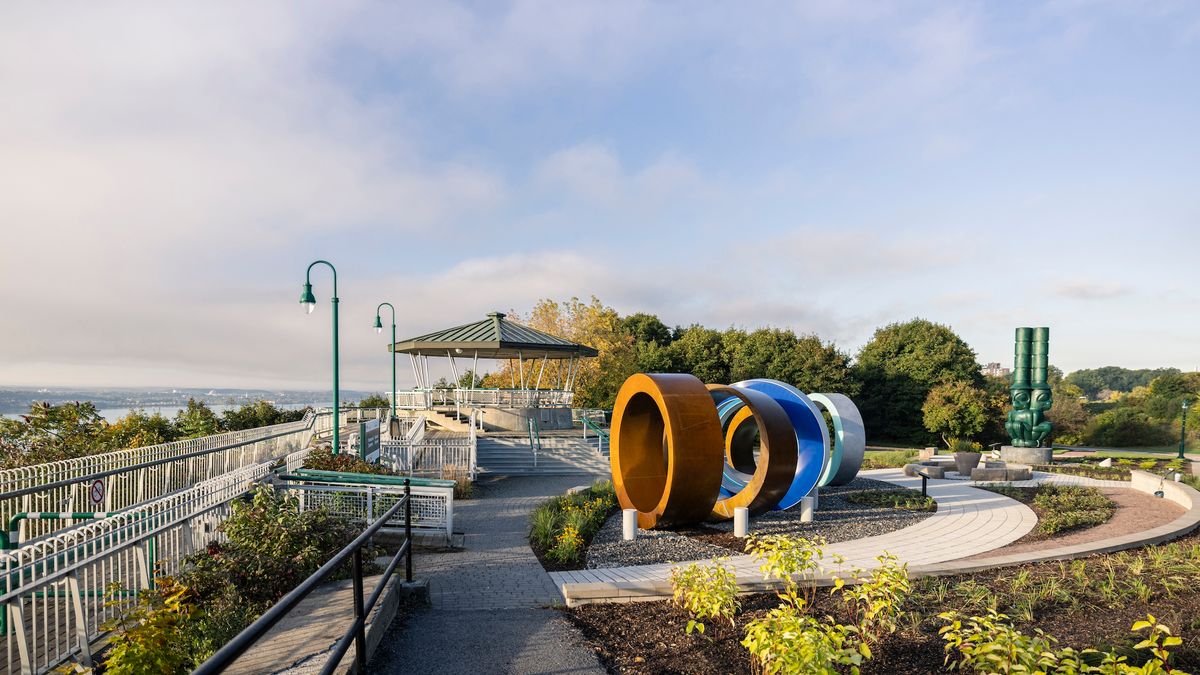On Canada’s National Day for Truth and Reconciliation (30 September), two new works by Indigenous artists have been unveiled in Québec City’s Cap Diamant, the historic site of the famous Battle of the Plains of Abraham. In 1759, the troops of British General James Wolfe climbed the cliffside overlooking the St Lawrence River to take Quebec from the French troops lead by General Louis-Joseph de Montcalm. Both generals died in battle, and centuries of “the two solitudes” between French-and-English-speaking Canadians ensued. The site at various times has housed both gallows and brothels. But today it is a national park and houses two new sculptures by the Haida artist Chief 7IDANsuu James Hart and Wendat Nation artist Ludovic Boney.
This morning, the National Battlefields Commission unveiled a new iteration of Hart’s sculpture The 3 WatchMen (2023), donated by the Canadian philanthropist Michael Audain, and Boney’s Des perles en mémoire (Remembering Through Beads, 2024). The works’ pairing is a study in contrast: Hart’s is from the West, Boney’s from the East; The 3 WatchMen is vertical and linear, while Des perles en mémoire is horizontal and curvilinear; and one is named in English, the other in French.
The works will soon be accompanied by native plantings from both Quebec and Haida Gwai, and punctuated by a fire pit. The installation is intended to represent the beginning of a dialogue that goes beyond negotiating the two solitudes and explores ways to bridge the gap between the “many solitudes” of Canada’s First Nations. While the Indigenous village of Stadacona (now Québec City) had disappeared by the time the French explorer Samuel de Champlain arrived in 1608, the site remained a hub for the Wendat and other First Nations, who gathered there for political reasons, trade and cultural happenings. The installation of the new works is a kind of contemporary continuum of this tradition.

7IDANsuu James Hart, The 3 WatchMen, 2023, at Cap Diamant in Québec City Courtesy The National Battlefields Commission
Hart’s work is a 6m-tall, 10,000lb bronze sculpture in a jade green patina finish depicting three sentinels standing guard atop the totem poles that stand in the villages of the Haida Gwaii archipelago on Canada’s west coast. Seated back-to-back, these watchmen represent the legendary guardians of the Haida Nation.
“They are Guardian figures looking out for you in this world and in the spirit world,” Hart tells The Art Newspaper. “Their job is to warn you of any danger they see coming.”In an artist’s statement, he adds: “The monument is meant to inspire dialogue. May all visitors to this historic site reflect on current issues, be on the look-out for dangers—like repeating the mistakes of the past—and come together in reconciliation to build the world of tomorrow.”
Hart says he has made several iterations of The 3 WatchMen, after the original 7ft version in yellow cedar. “We scanned the original and blew up this one to a 20ft piece—and it morphed into something different in the details of the hands and faces.” Working with his son for over a month, Hart cut the form in foam and worked to perfect the piece, keeping in mind “how we wanted it to be viewed in the public eye”.

Ludovic Boney's Des perles en mémoire (2024) at Cap Diamant in Québec City Courtesy The National Battlefields Commission
Boney, for his part, had to consult with his community for two years before creating his work. “The elders wanted me to represent the nation visually—but how do you that exactly? It’s a huge responsibility,” he tells The Art Newspaper. An initial concept of two tectonic plates merging was scrapped in favour of a representation of wampum beads.
Traditionally made from seashells, these tubular purple and white beads can be strung together to form belts or woven necklaces. These items were ritually exchanged to seal diplomatic alliances between nations or to inscribe them in memory. Boney says the colours and materials he used—Corten steel left in its natural state as well as other rings painted iridescent silver and blue—were symbolic of both the past and new beginnings. He hopes visitors to the site will engage with the work and walk through its rings.
“It’s a passageway that people can traverse, but metaphorically it’s a passage to understanding our culture,” Boney says, calling it “the first step in a growing friendship”.
According to Hart, when he met with Wendat elders and Boney, a proposal developed for a youth exchange programme between the two nations. “There’s also been talk about expanding this project into a larger sculpture garden,” he adds, “with works by First Nations from across Canada.”


